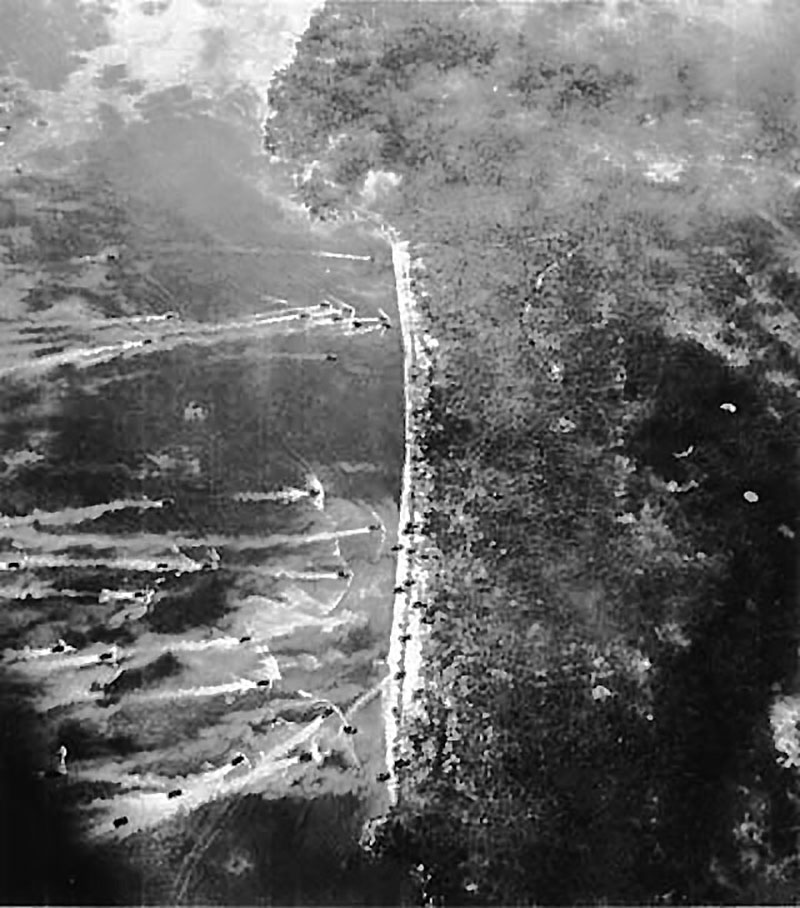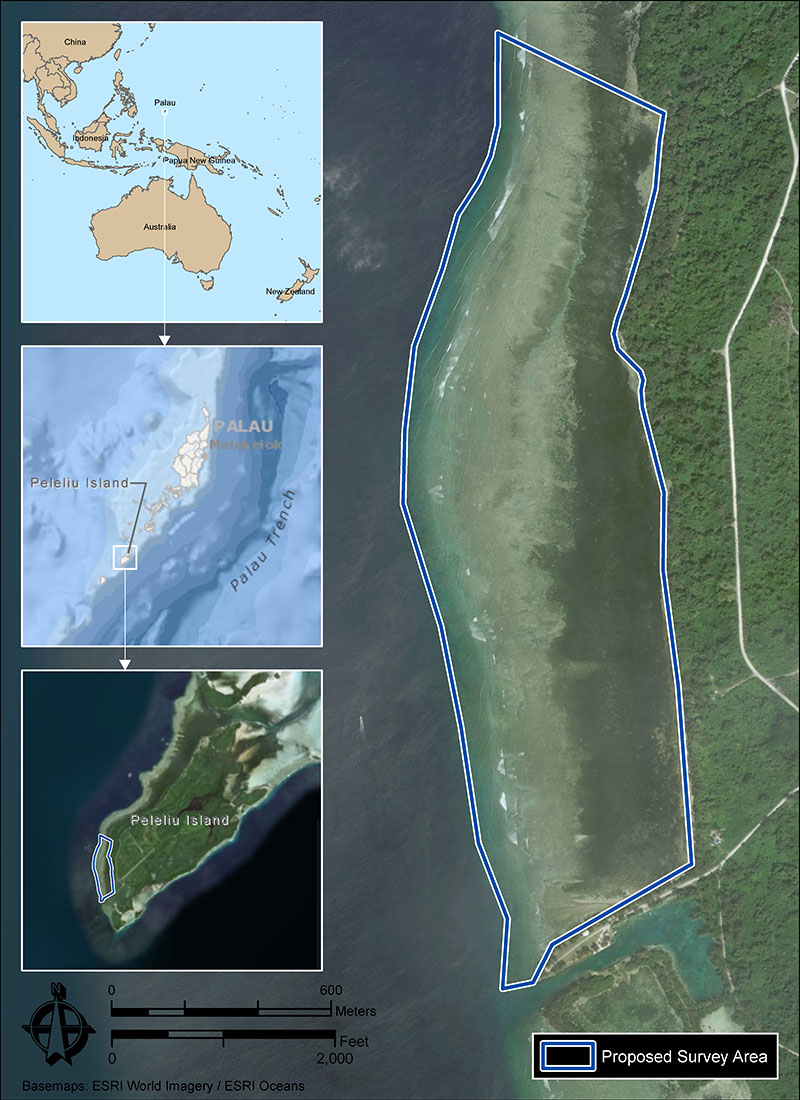
by Toni L. Carrell, Ph.D., Chief Scientist and Principal Investigator, Ships of Exploration and Discovery Research
March 24 - April 14, 2018

Figure 1: Amphibious tractors approach the northern beaches on D-Day, 15 September 1944. Department of Defense Photo (USN) 283745. Download larger version (234 KB).
At 0800 on September 15, 1944, the first waves of men in 73 amphibious tractors started for the beaches of Peleliu. Within the first hours, the Third Armored Amphibious Tractor Battalion of the U.S. Marine Corps lost two officers, 78 enlisted were wounded, 26 were killed, four were missing, and Marine casualties exceeded 500.
By the end of the day, nearly 60 of the amphibious tractors, 15 tanks, and numerous amphibious trucks were damaged, wrecked, or sunk. It was the bloodiest first-day landing of the entire Pacific campaign. Despite this, the amphibious element of the invasion is largely ignored in World War II (WWII) histories. This project will be the first of its kind in Peleliu to explore the landing beaches and fringing reef by conducting a comprehensive systematic remote sensing search for the material remains from this forgotten battlefield.
Peleliu is one of the southern islands in the Republic of Palau, located in the Caroline Islands, in the Western Pacific north of Papua New Guinea and southeast of Japan (Figure 2). The WWII invasion beaches run roughly north to south on the southwest side of the island.

Figure 2: Location of Palau, Peleliu, and the project area. Graphic by SEARCH, Inc. Download larger version (5.1 MB).
Many of the amphibious craft were lost before they reached the beach, so they are likely to be found on top of or in the fringing reef, on the shallow plateau outside the reef, or in the lagoon and beach edges. The amphibious craft and their debris, as well as shells from the Japanese defensive positions on shore, are primarily metal. To locate them, we will conduct a shallow water survey of the reef and invasion beaches using a towed side-scan and magnetometer. In areas that are not accessible by boat, snorkelers and divers will visually examine the reef.
The amphibious craft were versatile and could go from the reef edge onto the shore. What they could not do was easily get over the reef. In advance of the invasion underwater demolition teams (UDTs) were deployed to examine the reef for mines, locate and destroy obstacles in the lagoon, and blast paths through the reef for the amphibious craft (Figure 3).
To understand what impacts there are, we will sample and document areas of the reef using 3D photogrammetry. By including reef characterization of known areas where WWII pre-invasion blasting occurred, to our knowledge never previously undertaken or scientifically examined, the data gathered will be a first effort at understanding what impacts, if any, are still visible after 74 years.
We will also use 3D photogrammetry to record the WWII sites. By using both the biological and archaeological, we will be better able to determine how WWII artifacts affect reef habitat structure, coral composition, habitat quality, and recovery, and how reefs affect WWII site preservation.

Figure 3: Aerial view of UDT operations blasting through the fringing reef. Image from Bureau of Aeronautics 283713. Download larger version (367 KB).
By the time U.S. forces reached Peleliu, they were rapidly developing and refining the techniques for amphibious assaults. Most of the islands in the Pacific have a fringing reef and each one had distinctive environmental characteristics and defensive preparations. Terrain analysis, well known to military planners, is critical to a successful operation, even more so when the reef is 700 to 1,000 yards from the beach, the defenders are well organized and prepared, and a shallow lagoon slows down progress. The specific plans for Peleliu and how terrain analysis informed both the invasion and where we look today for archaeological sites is an important element in the project.
Previous periods of shoreline development and reef cleanup have already significantly altered the amount and type of WWII sites that are preserved, which directly affects our ability to interpret this significant battle to the public. We do not know what sites are left or whether there are impacts of the pre-invasion blasting still visible. Because the invasion beaches are an under-represented component of this pivotal battle, we are embarking on a project filled with the potential for discovery.